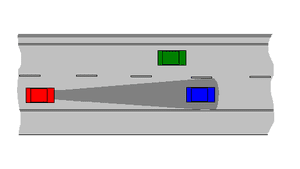
The self-driving car, whenever it arrives, is sure to be hailed as a breakthrough.
The truth is, autonomous cars have been arriving in bits and pieces for years. Bristling with sensors and microprocessors, cars — especially at the top end of the price spectrum — have long been lightening the driver’s workload and improving safety with features like parking assist, lane-departure warning, adaptive cruise control and various crash-avoidance technologies.
More bits of autonomous driving technology are arriving in the new model year.
“We’ve given the vehicles senses,” Ralf G. Herrtwich, director for driver assistance in the advanced engineering group of Daimler, the parent company of Mercedes-Benz, says in a video presentation for reporters. “They can see and do so much more.”
The car Dr. Herrtwich speaks about is the 2014 Mercedes S-Class, which arrived at United States dealerships this month. The car makes a significant step toward the ability to drive autonomously, using many types of sensors to gather data about driving conditions, including a stereo camera that lets it “see” by providing 3-D images, akin to human vision.
The new S-Class — an S550 and S63 AMG are first to arrive in the United States — offers a package of technologies, some of which are extra-cost options, that Mercedes calls Intelligent Drive. Among its many components are systems that can steer, brake, cover blind spots and watch for pedestrians and animals. One function monitors the road ahead to ensure that passengers are not jolted by potholes.
Dr. Herrtwich points out that the car’s computing power, in the form of processors and algorithms, is highly developed.
“Our Intelligent Drive Systems these days are capable of analyzing complex traffic situations, and they have developed an understanding for what to do,” he says.
It is a network of sensors that makes the analysis possible. Most perform multiple functions, generating data for a number of driver-assistance systems.
Included are numerous cameras, mounted front, rear and side. Among them are two forward-facing infrared cameras for night vision, and a stereo camera — actually two cameras in a single housing — that provides 3-D imaging crucial to the system’s decision-making powers.
Go deeper with Bing News on:
Autonomous cars
- A 'hesitant' and 'confused' car? Driverless car turns into oncoming traffic
A video shared thousands of times on social media shows the car driving into oncoming traffic in Tempe. However, an ASU professor says the cars are still safe.
- Autonomous car company Glydways to bring driverless public transit to East Contra Costa
Public transit has struggled to recover its pre-pandemic ridership, but an autonomous car company has a driverless transportation system that could make East Contra Costa County a leader in modern transit design.
Go deeper with Google Headlines on:
Autonomous cars
[google_news title=”” keyword=”Autonomous cars” num_posts=”5″ blurb_length=”0″ show_thumb=”left”]
Go deeper with Bing News on:
Self-driving cars
- A dad review of San Francisco's self-driving Waymo taxis
That’s probably why a bunch of San Franciscans decided to beat the s—t out of a Waymo taxi a few months ago:
- Tesla's Self-Driving Robotaxis May Get a China Rollout First
A state-owned newspaper revealed that Elon Musk's moonshot Tesla vehicle may soon be self-driving through Chinese streets.
Go deeper with Google Headlines on:
Self-driving cars
[google_news title=”” keyword=”self-driving cars” num_posts=”5″ blurb_length=”0″ show_thumb=”left”]










